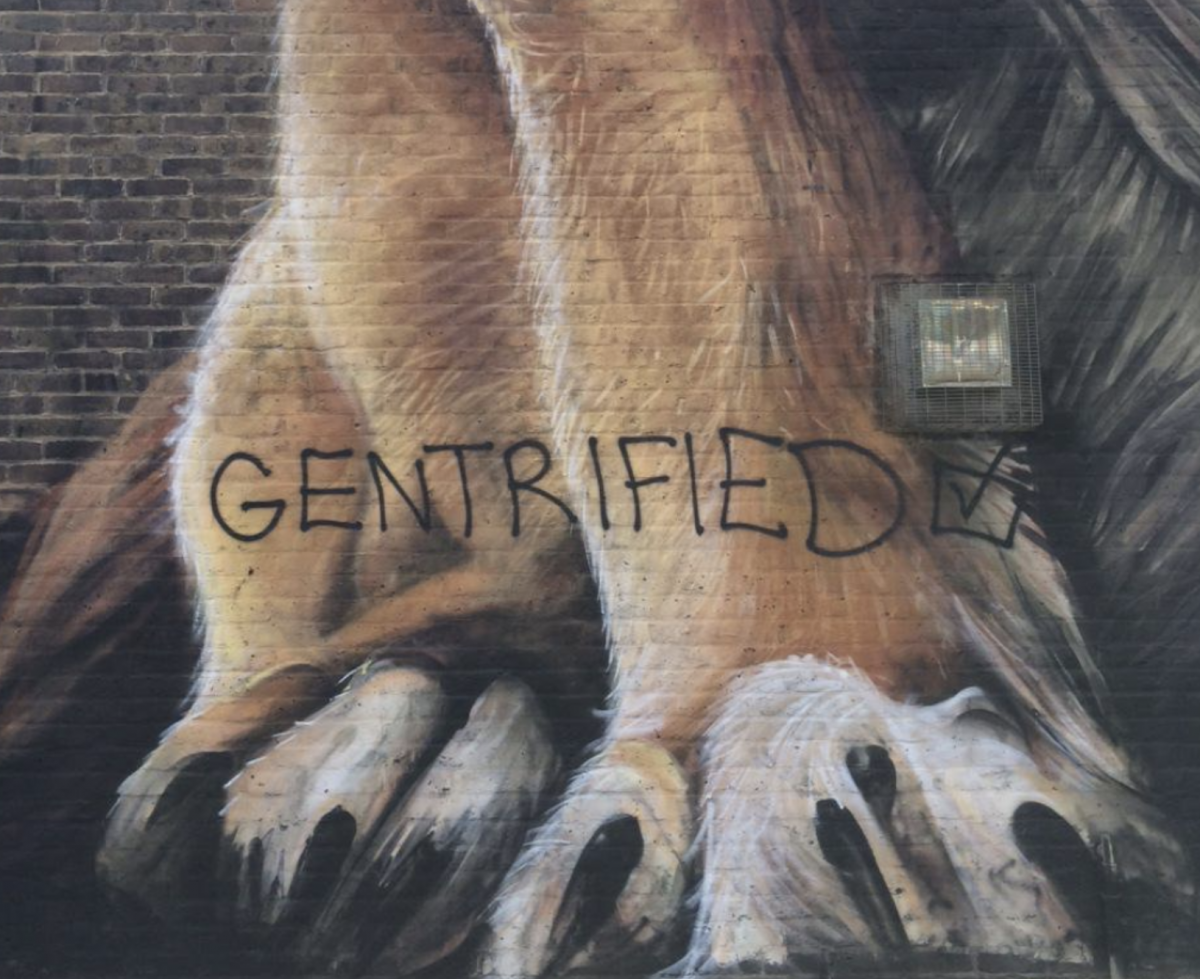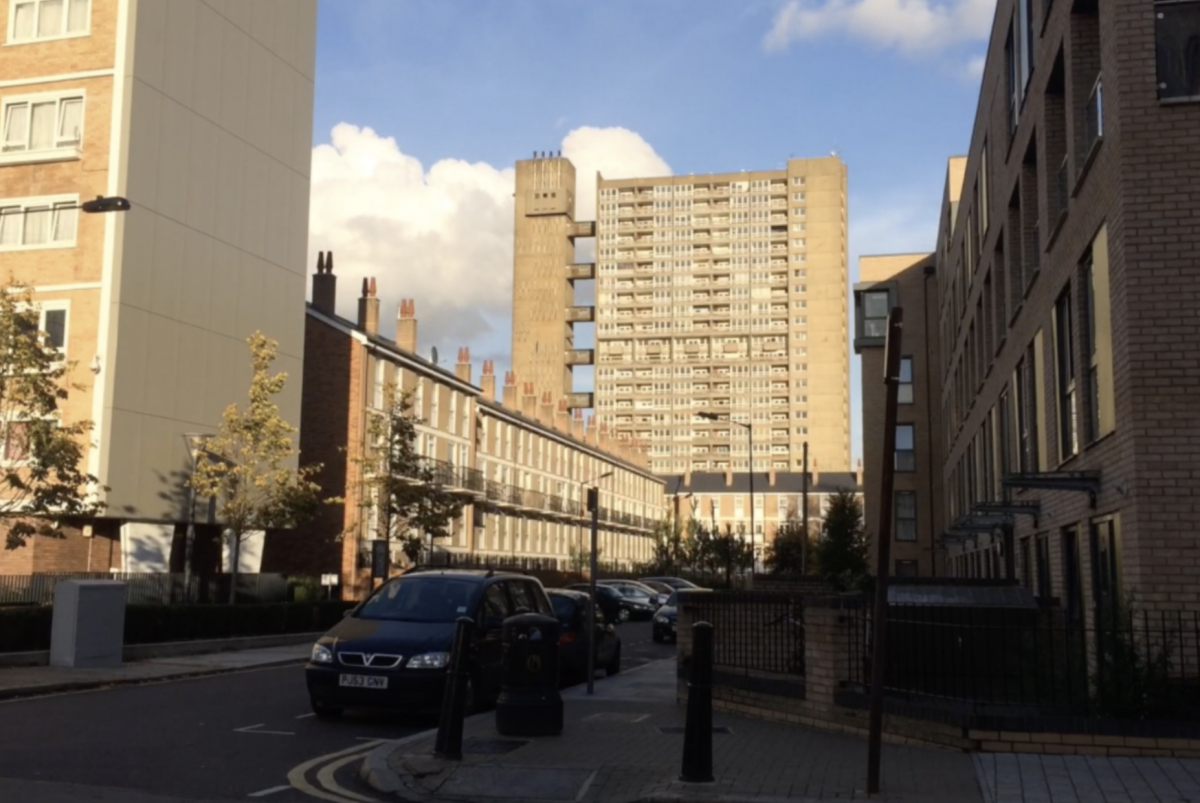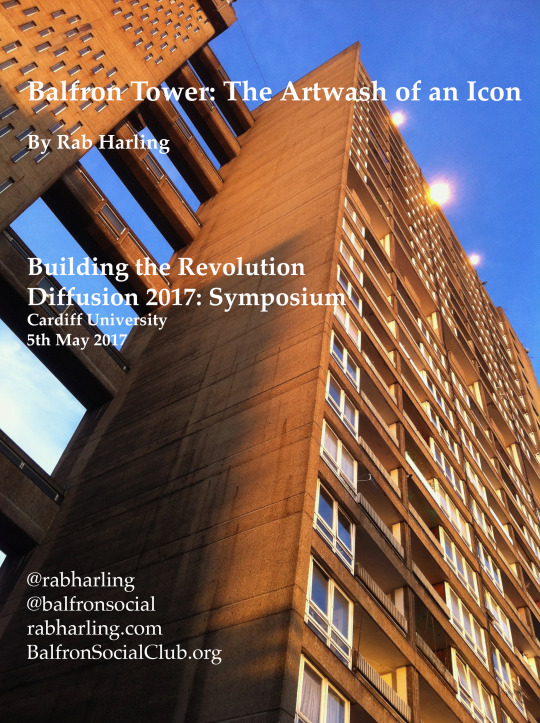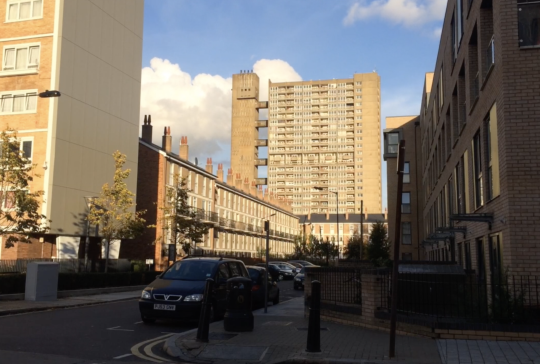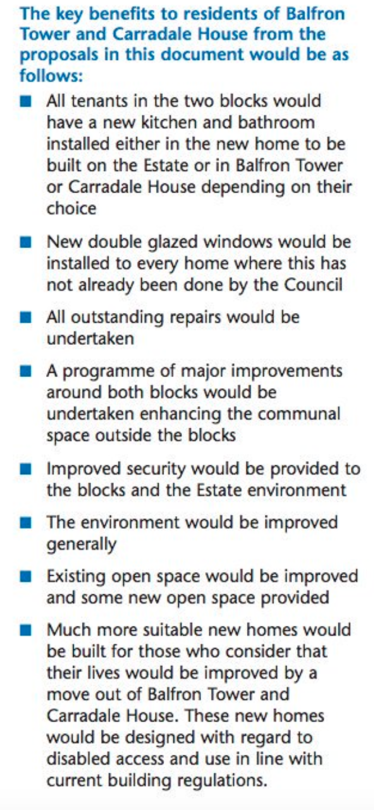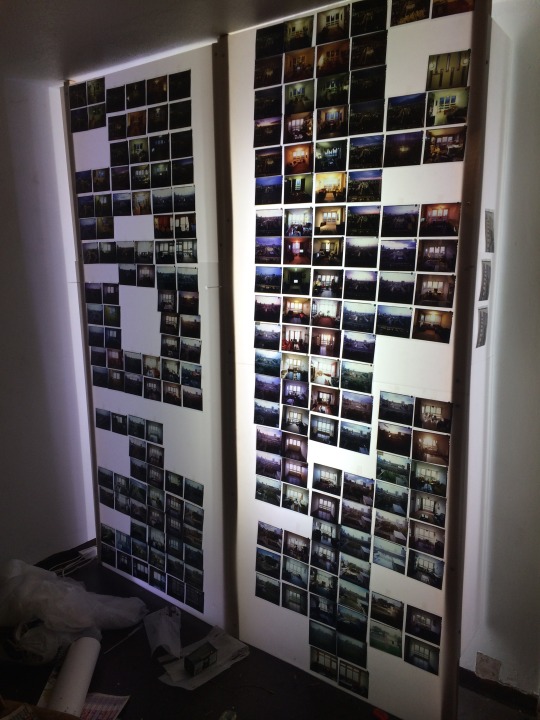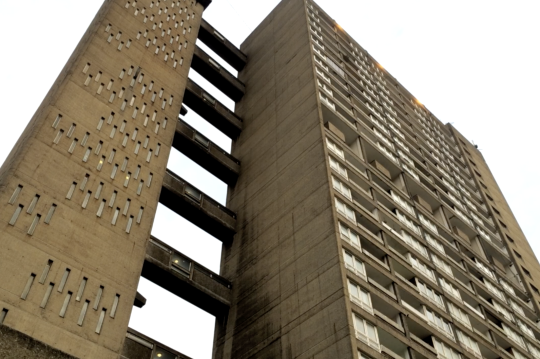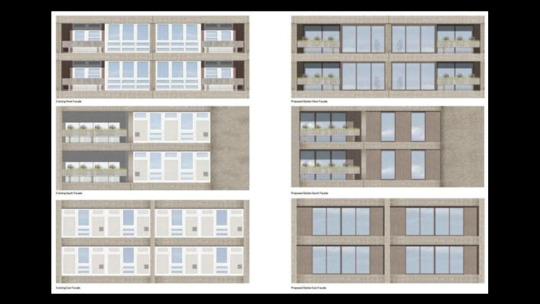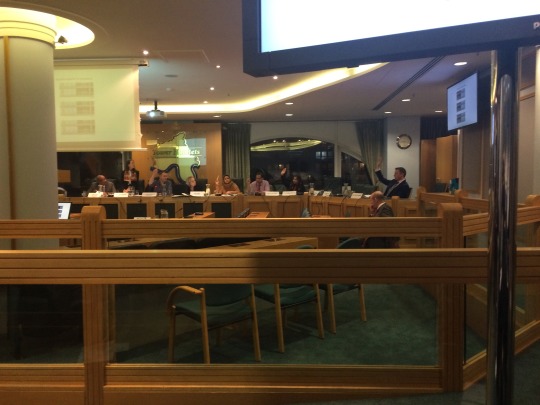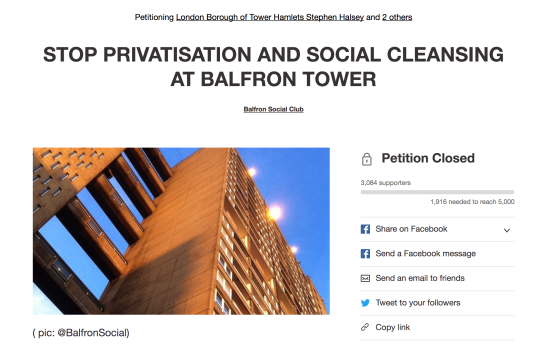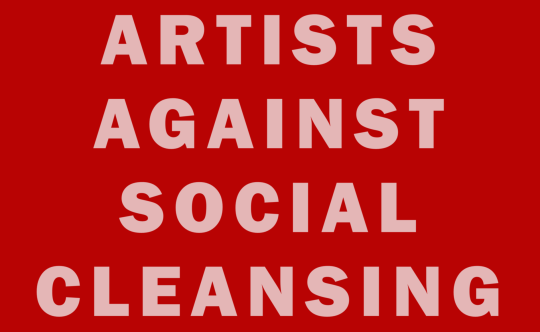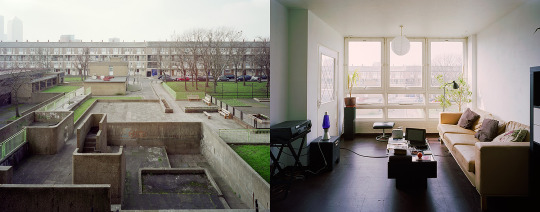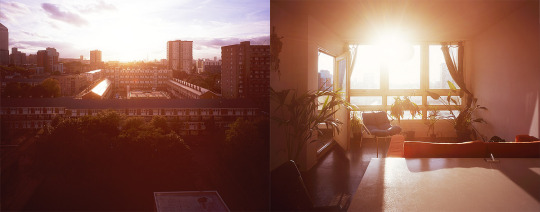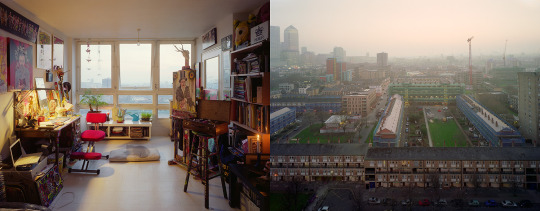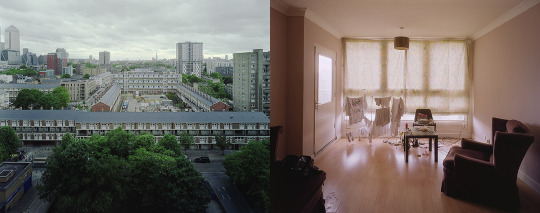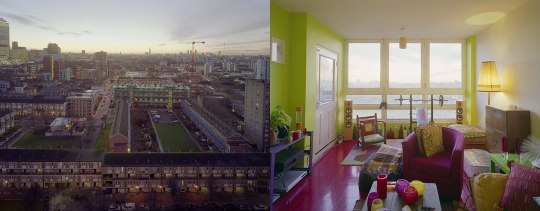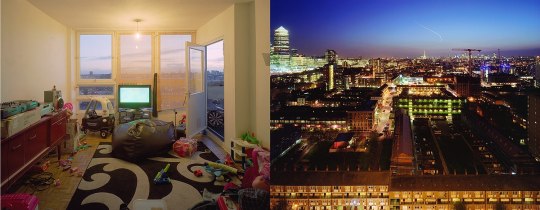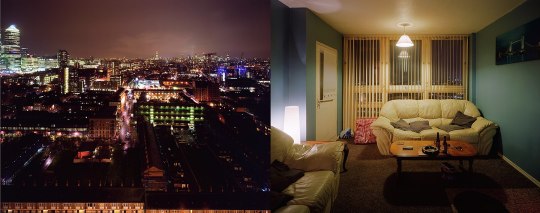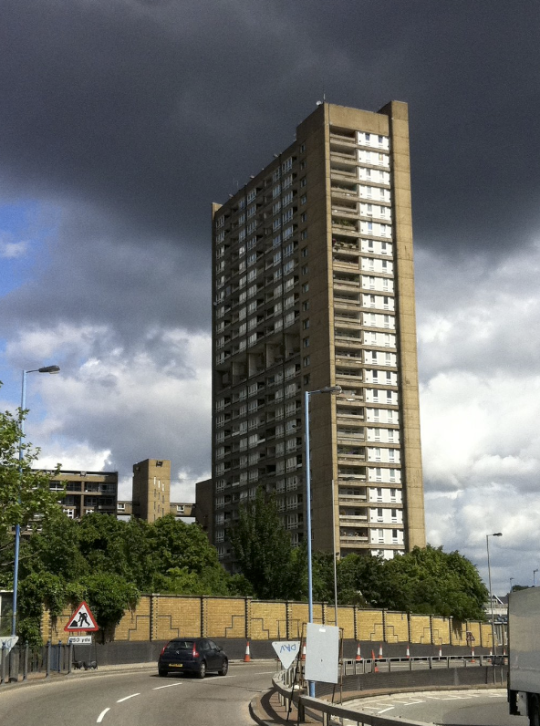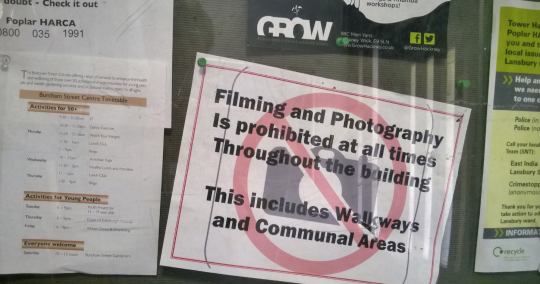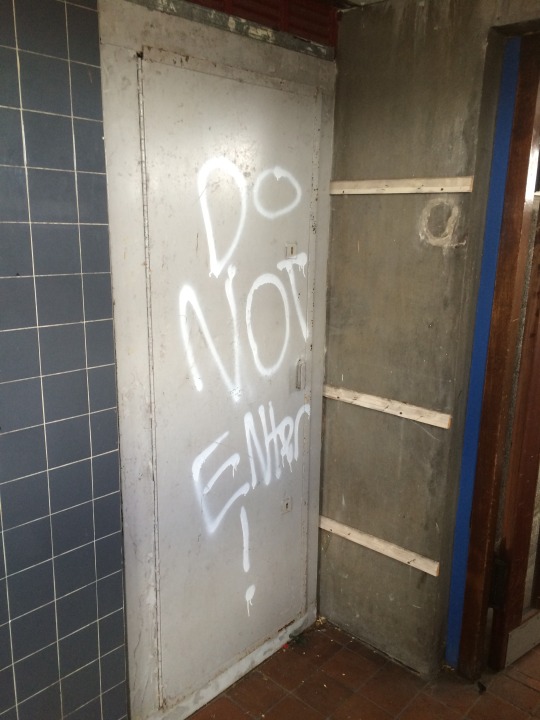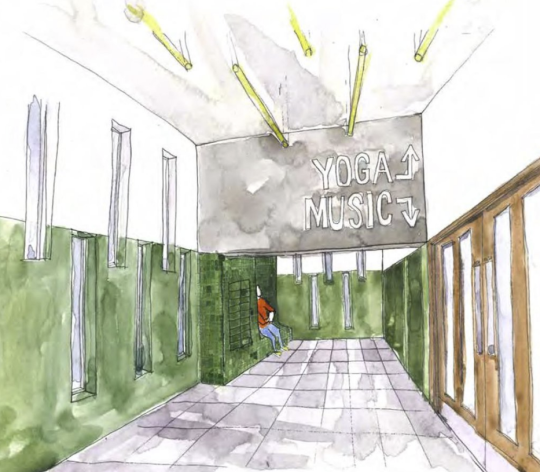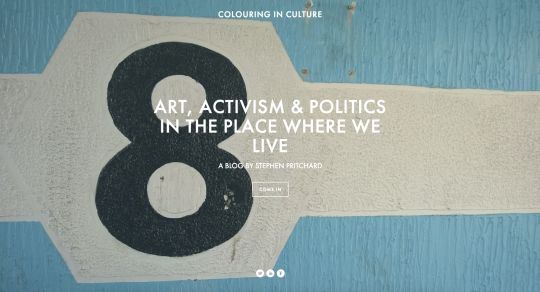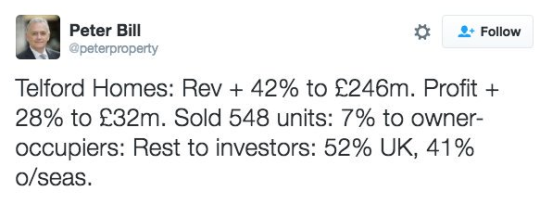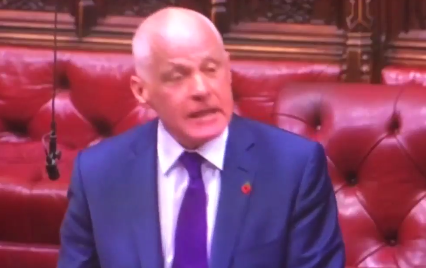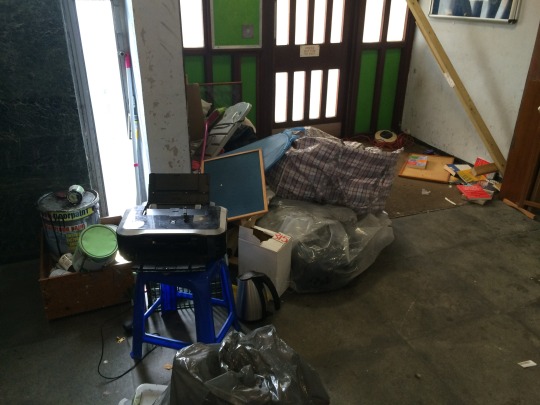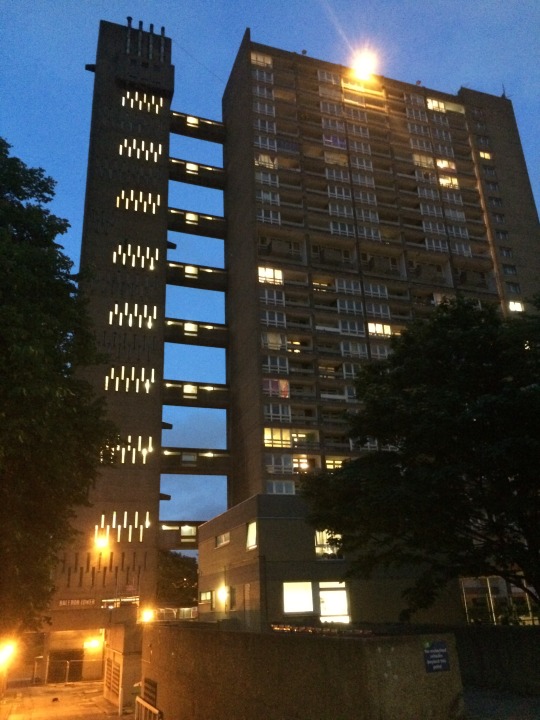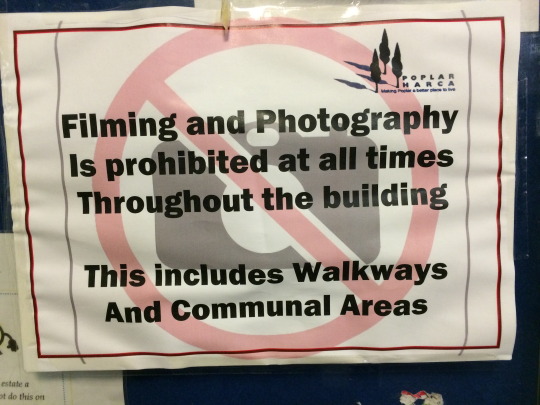
This talk was commissioned by The Rainbow Collective (1) and was first delivered at Building a Movement at the East End Film Festival (2), London on 14th April 2018.
In this talk I will attempt to draw analogy between a rhizome and the organic interconnectivity of community and how through genetic modification the rhizome can be engineered to work against the community in the service of property developers, focussing on Poplar Harca (3), Up Projects (4) and my own research in Balfron Tower (5).
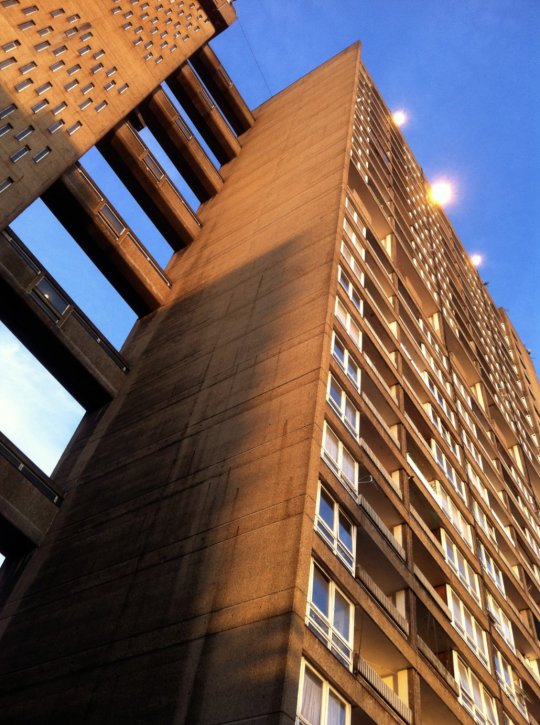
Balfron Tower, Poplar (pic: © Rab Harling)
When I first started living and working in Balfron Tower at the start of 2011, alongside my planned photographic project to turn the tower inside out using large format photography, to reveal a cross section of the tower depicting the interior worlds of its residents, I also proposed alongside to map the rhizome-like structure of the community living in the Tower, and as the project developed, to record the community’s interconnectivity as it prepared to be decanted of its social housing tenants, prior to the regeneration and 100% privatisation of the block by registered social landlord Poplar Harca, in partnership with Telford Homes (6) and luxury property developers and Presidents’ Club (7) table hosts Londonewcastle (8).
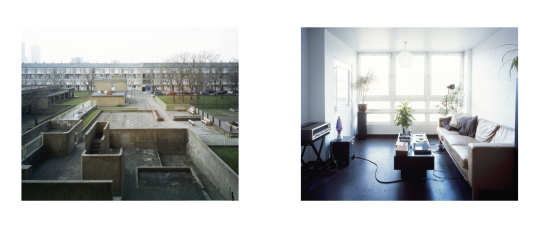
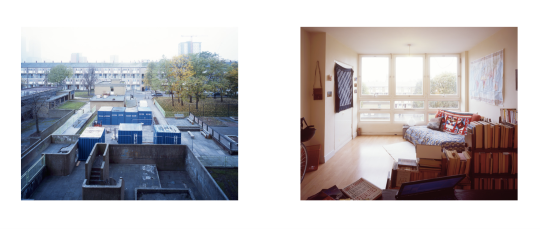
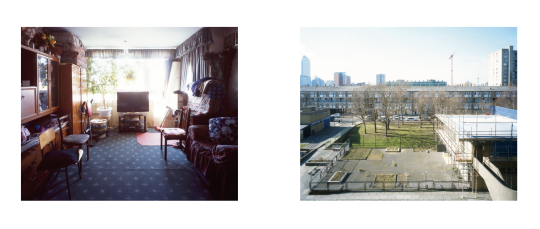
There was some understandable outrage amongst tower residents when publicly-funded Bow Arts (9) flounced into Balfron Tower, in 2007, promoting it as Artwash Central, commissioning the likes of John Walter and Simon Terril to become the friendly faces of artwash and of their imminent gentrification, further confirming the profession of artist as mere foot soldiers to property developers intent upon feasting upon the carcass of our social housing.
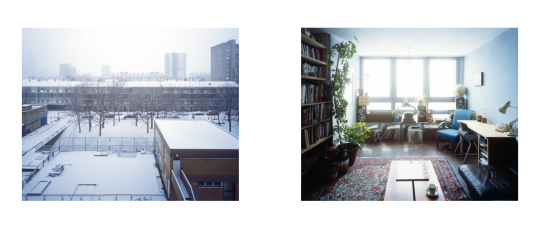
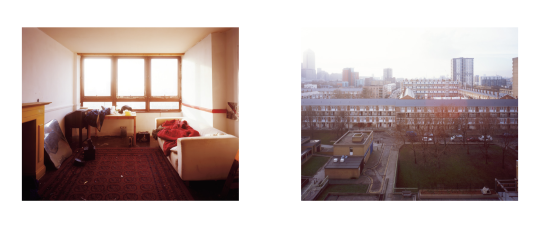
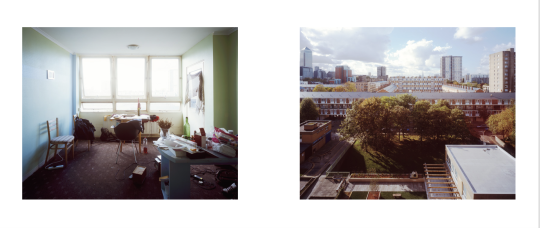
It wasn’t long before the residents committee banned art projects in the tower, a ban aggressively enforced against any artist daring to be creative outside the confines of their own home (at least not without official approval in advance).
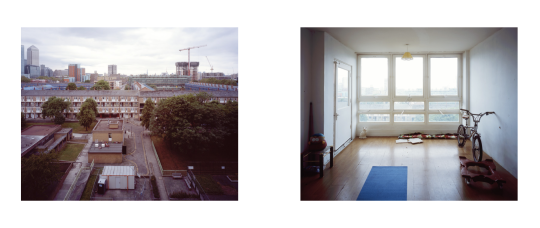

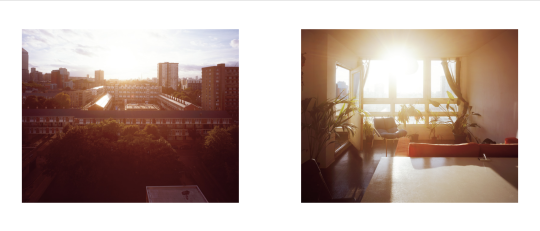
This made it necessary to map interactions with residents in a very different way than had I put up posters on a Poplar Harca controlled community notice board encouraging people to come forward to participate.
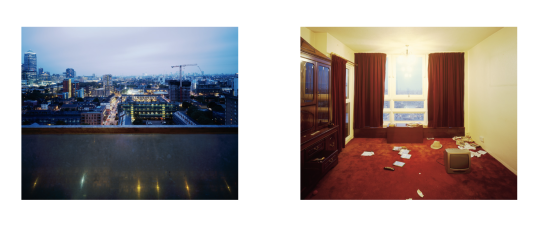

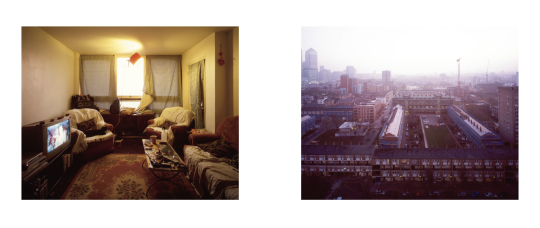
Instead, I got to know my neighbours and integrated myself into the community and made myself a useful person to know, and it wasn’t long before I was a familiar face around the building, sometimes to a mixed reception, somewhat understandable given the conflicted nature of a community in the process of being removed from their homes, all the whilst being surrounded by a group of mostly middle class artists purposefully and insensitively placed there to raise the profile of the building, and the value of the homes they were being decanted from.

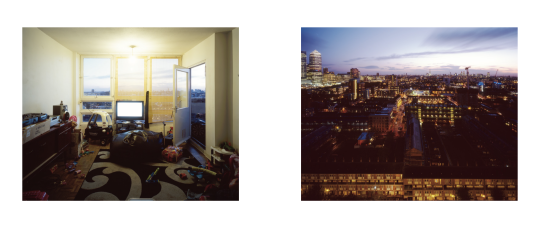
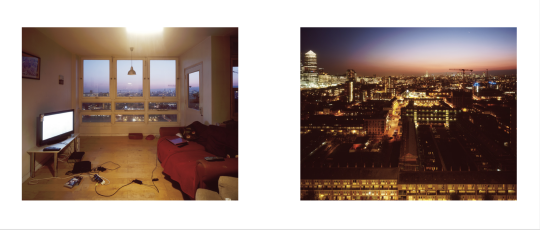
In my attempts to map the interconnectivity within the community, by encouraging neighbours to tell their friends in the building about my work and to encourage their participation, I discovered that there were a lot of people who were very isolated and alone within that tower.
-There were a lot of people who quite simply did not know any of their neighbours at all-
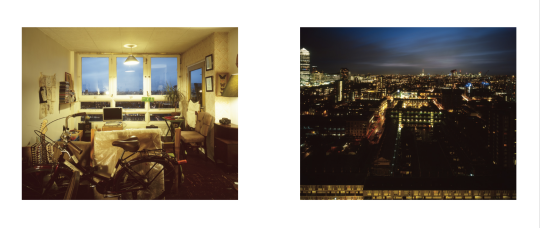
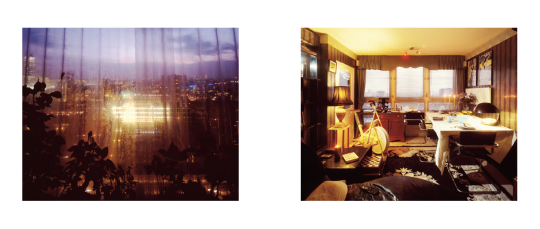

Images from Inversion/Reflection: Turning Balfron Tower Inside Out by Rab Harling
In some cases I faced some hostility (more often from the artists than anybody else), but in most cases my neighbours were friendly and welcomed me in to their homes and willingly and enthusiastically took part in my project to document their surroundings, before they were written out of the history of the great Erno Goldfinger’s greatest achievement.
Before my eviction from Balfron Tower by publicly funded “charity” Bow Arts, at the end of 2013, in an attempt to sabotage my work as revenge for questioning significant anomalies in their taxes (10), I had spent three full years working and living in the building, and 120 out of 146 of my neighbours had participated in my work, creating an incredible archive of life in Balfron Tower during its social cleansing.
Whilst a potential attempt to map the rhizome was theoretically there in numbers, it was simply not there in connectivity, with most neighbours being far more isolated than had been anticipated.
The divide and conquer tactics used to clear the community of Balfron Tower had been very effective, decimating a once proud and friendly East end community. A community that had famously been moved street by street, from the old terraced slums into the great futuristic architect designed communities in the sky, had been all but destroyed by systemic practice to dismantle any potential opposition to their social cleansing and the sale of their social housing as luxury properties to Canary Wharf bankers and architecture professionals with no sense of moral outrage.
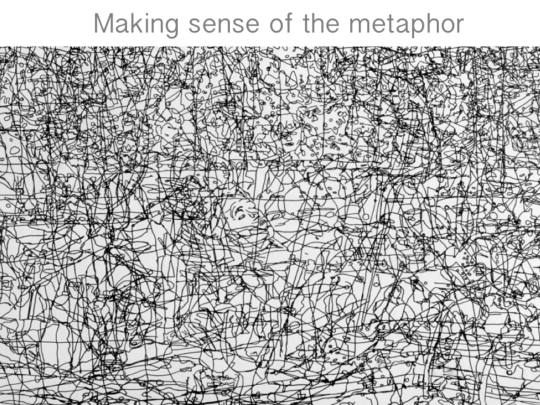
Making sense of the metaphor
This brings me to my second look into the rhizome and the darker nature of community connectivity, which is to look at the forces that led to the social cleansing of Balfron Tower, that led to the purposeful devastation of an established community over a period of ten years, the length of time it took to clear Balfron Tower.
One of the most common complaints I heard when speaking to people in Poplar is just how little support local people receive from Poplar Harca, which effectively runs Poplar as an unelected local authority, including providing community centres, markets, parks, police and schools, which are all very much under the control of Harca.

A Poplar Harca public consultation on the regeneration of Chrisp Street Market, 2013
Complaints are common that Poplar Harca are running the community for the people they want to live there, rather than the people who do live there; placemaking a future community to create their vision of “a new Shoreditch” whilst carrying out sham consultations, organising fake petitions as well as practically every heinous act a social landlord could carry out against a community it desperately wants to displace.
If my rhizome analogy functions in relation to a successful community, or the failures in the mapping of an unsuccessful one in the process of decant, such as that found in Balfron Tower, how would it work when applied to Poplar Harca, the Registered Social Landlord?
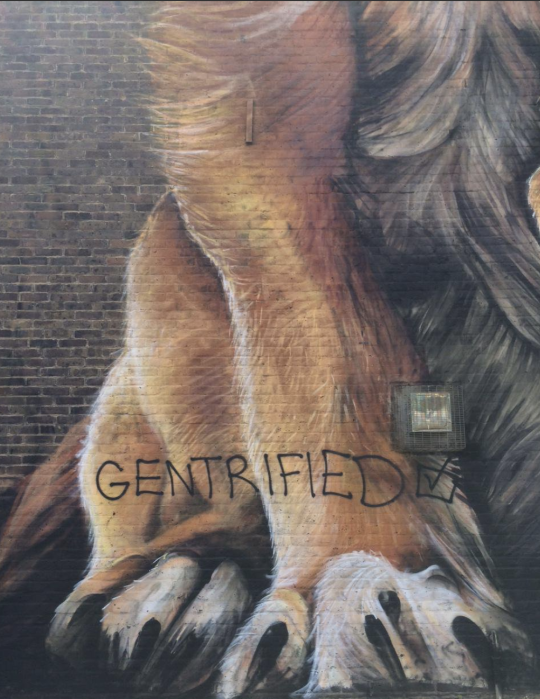
Artwash is not welcome in Poplar
The arrival of the Victoria and Albert Museum in Poplar, with the creation of the Lansbury Micro Museum (11) at Chrisp Street Market, seems to typify the kind of memory harvesting being undertaken by artwashers, supported by the property developers whose interest they serve.
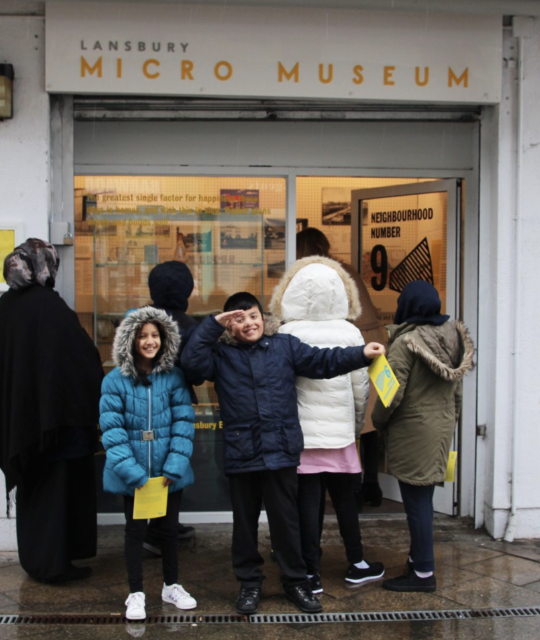
The Lansbury Micro-Museum at Chrisp Street Market, a joint venture between the Victoria & Albert Museum and Poplar Harca
A “micro-museum”, as was the case at Chrisp Street Market, or some other attraction arrives in the neighbourhood. They are friendly and welcoming and host all sorts of events to try and engage the community.
Meanwhile, they seek to harvest your photographs, your memories, which they will use to reminisce your passing, as you are forced out of your community, as your social housing is demolished and replaced by “affordable” housing you cannot afford, with an awful lot of units for sale, via a solicitor in Hong Kong (12).

Memory Harvesting on Brick Lane
And don’t be too surprised, if you take part in one these artwash exercises, to find your grandma staring back at you on a hoarding surrounding a building site that has no social housing, telling you about the wonderful heritage you could be a part of; subject to contract and a significant deposit; for a 25% share in a tiny new-build, so long as you meet the criteria to receive “affordable” housing, and earn approximately £70k per year.
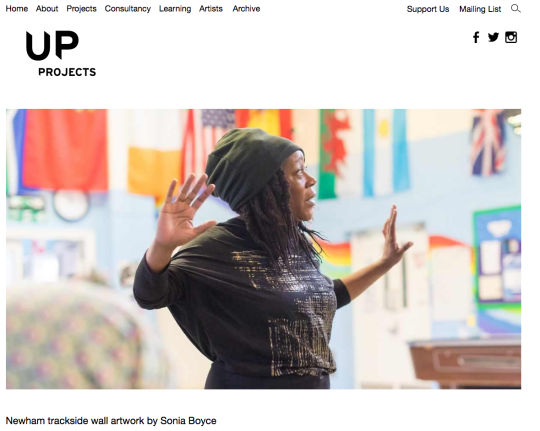
Sonya Boyce on the Up Projects homepage
The addition of new board members in 2017 to Arts Council NPO Up Projects could be a good indication of their genuine mission rather than their stated aims to place contemporary art in public places. Through the prism of Up Projects I will investigate just how well the rhizome can function, should a clear agenda be identified; or a hidden agenda on behalf of a property developer.
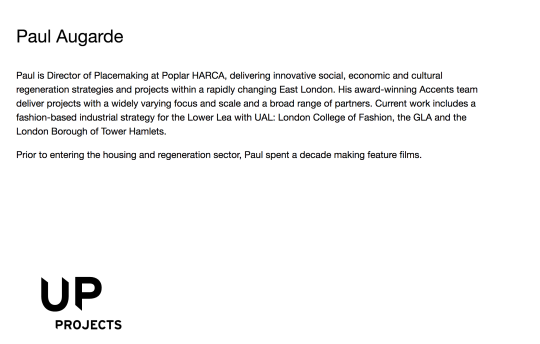
Paul Augarde claims to have “spent a decade making feature films.” yet his IMDB.com profile reveals a very different story (13).
In addition to Xanthe Arvanitakis, commercial director of Soane Museuem, Helen Pheby of Yorkshire Sculpture Park, Paul Augarde, Director of Placemaking for Poplar Harca, was also appointed to the board of directors of Up Projects in 2017, so it might be interesting just to take a look at the accounts of Up Projects to see where they get their money.
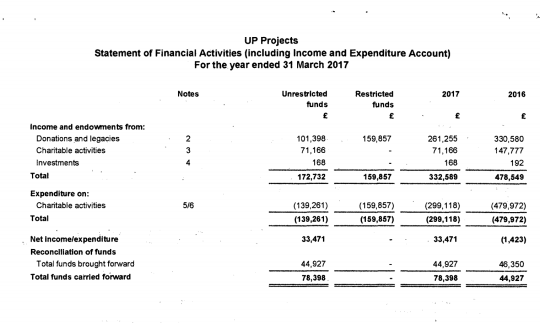
Up Projects Statement of Financial Activities (14), 2017
Their accounts reveal that over the 2 years, 2016 and 2017, they received donations and grants of over £811,000. Let’s take a closer look at this income, perhaps to see if they are funded to fulfil some sort of agenda.
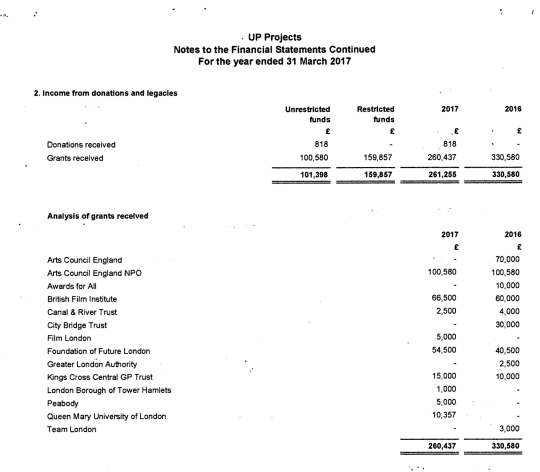
Up Projects Analysis of Grants Received (15), 2016 & 2017
Arts Council England is their greatest funder, supplying Up Projects with over £271,000 of public money over two years. Significant sums were also received from the British Film Institute, Queen Mary University of London and the Canal and River Trust, spotted recently writing supporting applications to the London Borough of Tower Hamlets, in support of the regeneration of Chrisp Street Market by Poplar Harca.
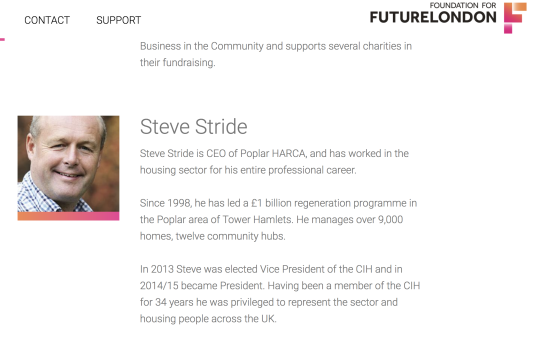
The architect of Poplar’s social cleansing, Steve Stride, CEO of Poplar Harca
However, the most revealing grants come from Foundations for Future London (16) who generously provided Up Projects with £95,000 over two years, and on their board? The architect of Poplar’s social cleansing, Mr Steve Stride, Chief Executive of Poplar Harca and Paul Augarde’s boss.
These examples just scratch the surface of the rhizome, which weaves a sinister pattern, repeated again and again across Poplar.
If you want to open a pub appealing to middle class gentrifiers, such as the Galvanisers on the Coventry Cross Estate then you get five years free rent from Harca. If you are a Bengali seamstress wanting to open a small stall at Chrisp Street Market, then you find their terms and conditions so stringent, along with your childcare and other family responsibilities, that the dream dies.

Free rent for some
If you have the right connections and want to open a bicycle shop in the market, then you get £17,000 free rent from Poplar Harca. However, if you are a trader seen to protest the unwanted gentrification of the market, you suddenly find your rent triples to £27,000 and you are forced to voluntarily close up your business, as has been reported to me by market traders this week.
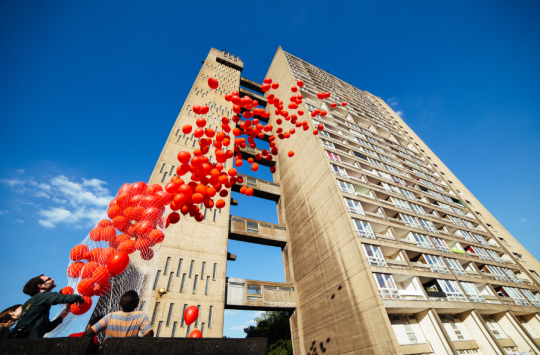
Londonewcastle showing gross insensitivity in their celebration of the social cleansing of Balfron Tower
Anybody who takes a look beyond Poplar Harca’s glossy PR with a critical eye quickly sees their shine tarnish as their shallow motives are revealed; to force the poor from our communities, to dismantle our social housing, in collaboration with HSBC and luxury property developers like Londonewcastle and Telford Homes, and to ensure their legacy as managing agents and co-landlords in the replacements to the social housing they are dismantling.
I appreciate my view that Balfron Tower should retain at least 50% social housing after regeneration is controversial and is clearly an outrageous demand, particularly of a Registered Social Landlord that was given 9000 properties by the London Borough of Tower Hamlets free of charge. I appreciate that not everyone shares my view.
If you would like to hear another point of view on Balfron Tower, from a public school educated architectural historian, who has never lived there, Owen Hopkins of Soane Museum is giving a talk at Sutton House next week, hosted by Pages of Hackney, a Clapton bookseller and The Guardian’s former gentrifier-in-residence Dave Hill (17).

Wayne Hemigway’s ‘pop-up’ plan sounds the death knell for the legendary Balfron Tower, Oliver Wainwright in The Guardian, 26 September 2014 (18)
Held in a National Trust property, again revealing NT’s taste for the artwash and social cleansing of Balfron Tower has not diminished since their poorly considered venture there with Poplar Harca and Wayne Hemingway in 2014, which led to Ollie Wainwright in The Guardian describing it as the “death knell for the legendary Balfron Tower”.
Maybe I should just take a moment to remind you that Owen Hopkins works for Soane Museum. The Commercial Director of Soane Museum is Xanthe Avanitakis who is on the board of Up Projects, alongside Paul Augarde, the Director of Placemaking for Poplar Harca.
The rhizome functions perfectly well, albeit in a somewhat genetically modified form skewed towards a property developer agenda, and like a rhizome, the complexity of the interconnectivities working to asset strip our community needs significant further research.

Contingent liabilities for the people of the London Borough of Tower Hamlets (19)
This is why I am demanding, before it is too late and there is nothing left worth fighting for, that the Mayor of London (or perhaps one the candidates in the forthcoming Tower Hamlets mayoral elections) should call for and carry out an immediate, independent and full audit of Poplar Harca, including the development contracts for Chrisp Street Market, Balfron Tower as well as every other estate Harca have demolished or any other community that is in the process of being gentrified, or that has already been destroyed by the Poplar Harca social cleansing machine; and there are many.

We need to know whether their operations are in the best interest of the people of Tower Hamlets or whether they are just serving the interests of banks, property developers and politicians, and Harca need to be held to account for the damage they have caused to our communities.
After all, the London Borough of Tower Hamlets has guaranteed to cover all liabilities and losses of Poplar Harca, using public funds.
I won’t hold my breath for an audit, but I will keep asking.
Rab Harling
14th April 2018
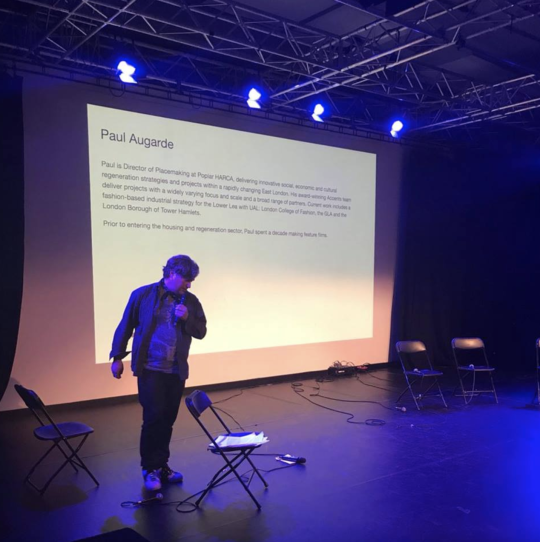
Rab Harling on stage at the East End Film Festival, London. 14th April 2018. Picture courtesy of The Rainbow Collective.
References:
- The Rainbow Collective website: http://www.rainbowcollective.co.uk/
- Building a Movement, East End Film Festival: http://www.eastendfilmfestival.com/programme-archive/action-housing-talks-screenings/
- Poplar Harca website: http://www.poplarharca.co.uk/
- Up Projects website http://www.upprojects.com/
- Rab Harling website http://rabharling.com/info/
- Telford Homes website http://www.telfordhomes.london/developments/current
- Details on the President’s Club scandal involving Londonewcastle https://www.theguardian.com/world/2018/jan/24/guest-list-presidents-club-all-male-charity-gala
- Londonewcastle website http://londonewcastle.com/developments/balfron-tower/
- Charity tax fraudsters Bow Arts website http://www.bowsarts.com/
- Artist squares up to Regulator over “manifestly unreasonable” fundraising investigation https://www.artsprofessional.co.uk/news/exclusive-artist-squares-regulator-over-manifestly-unreasonable-fundraising-investigation
- V&A Lansbury Micro-museum website http://lansburymicromuseum.com/
- Marketing video for former social housing on the Aberfeldy Estate, E14 https://www.youtube.com/watch?v=vnir13hRgtA
- Paul Augarde’s entry on IMDB, the industry standard for film & TV credits http://www.imdb.com/name/nm0041776/?ref_=nv_sr_1
- Report of the trustees and unaudited financial statements for Up Projects https://tinyurl.com/y94kfanz
- Report of the trustees and unaudited financial statements for Up Projects https://tinyurl.com/y94kfanz
- Foundation for Future London website https://www.future.london/
- No link will be provided for this event until after it has taken place
- Wayne Hemingway’s ‘pop-up’ plan sounds the death knell for the legendary Balfron Tower, Olly Wainwright, The Guardian, 26th September 2014 https://www.theguardian.com/artanddesign/architecture-design-blog/2014/sep/26/wayne-hemingways-pop-up-plan-sounds-the-death-knell-for-the-legendary-balfron-tower
- Tower Hamlets Annual Financial Report 2012/2013 https://www.towerhamlets.gov.uk/Documents/Finance/Accounts-and-audit/Statement-of-Accounts-2012-13-Jan14.pdf


